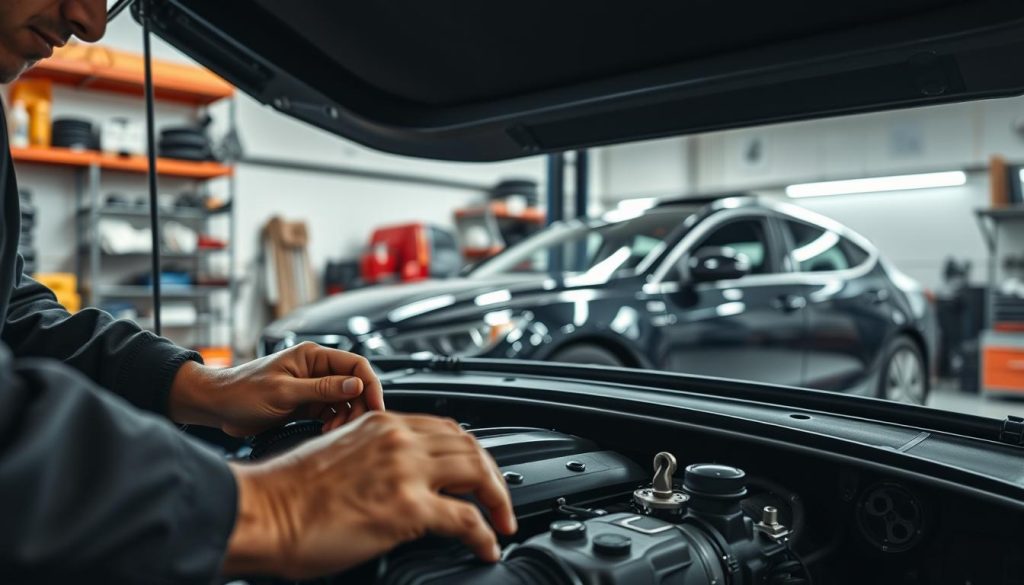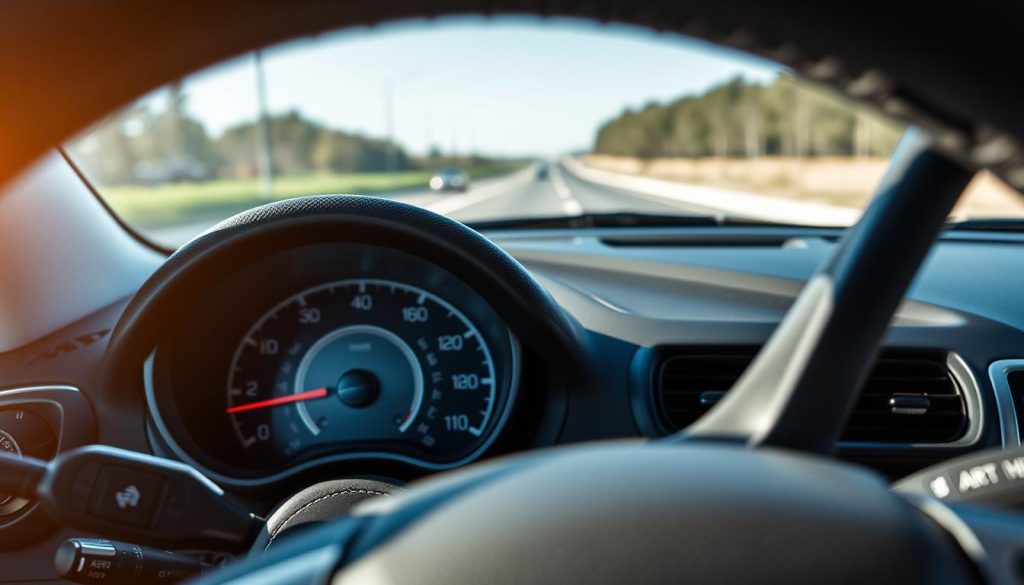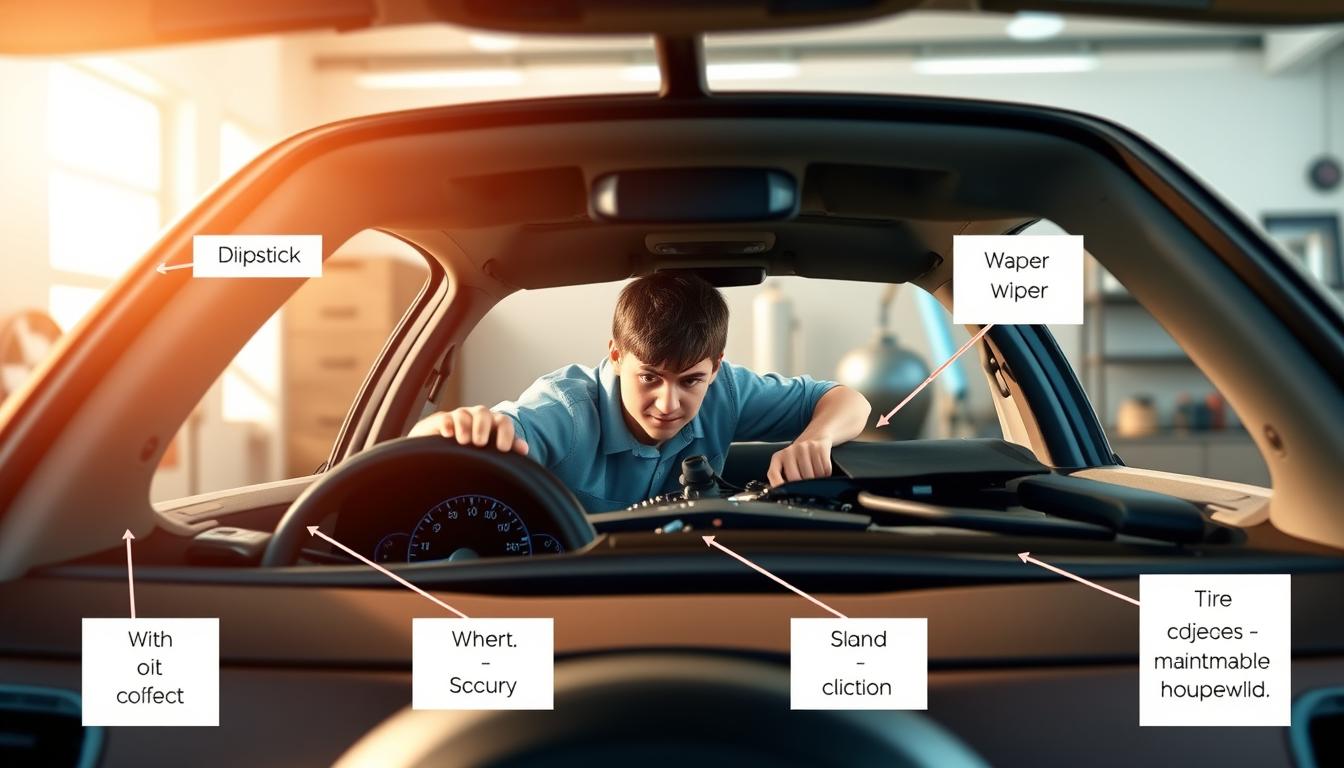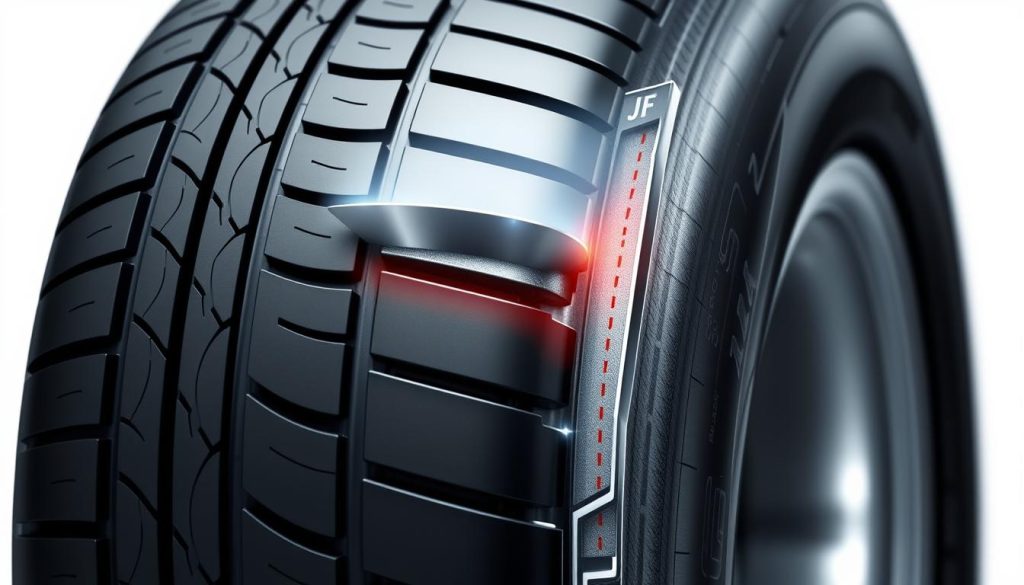Getting your first car is exciting and a big responsibility. It’s not just about filling up the gas. Keeping your car in good shape is key for safe driving and performance.
Things like wiper blades, tire conditions, and engine oil need our attention. So do coolant, lights, brakes, and the car battery. If we ignore these, we might face expensive fixes and safety risks.
To make sure your first car stays in great shape, learn and follow these important tips.
Key Takeaways
- Regular maintenance is essential to avoid costly repairs.
- Key components include oil, tires, and wipers for safe driving.
- Neglecting maintenance can impact safety and performance.
- New drivers should focus on understanding vital checks.
- Prioritizing basic auto care enhances vehicle reliability.
Understanding the Importance of Car Maintenance
Car maintenance is key for safe driving. If you’re new to car ownership, reading the owner’s manual is a must. It tells you what maintenance to do and when.
Don’t ignore car maintenance. It can cause serious problems like brake failure or tire blowouts. Knowing what the dashboard lights mean can help catch issues early.
Regular maintenance, like oil changes, keeps your engine running well. It can also make your car last longer. Tires are another important part. They can last 3 to 6 years and up to 80,000 miles.
Rotating your tires every 10,000 miles helps them wear evenly. This makes them last longer. Modern cars have systems that check tire pressure for you.
Brake pads are also important. They can last from 30,000 to 100,000 miles, depending on how you drive. Keeping up with maintenance saves money on repairs. Neglecting it can lead to up to 30% of breakdowns.
In short, regular car maintenance is vital. It keeps your car running well and safe. By taking care of your car, you avoid breakdowns and make your car last longer.

Key Safety Components to Regularly Check
Keeping our cars safe starts with checking important parts. Basic car care helps us stay on top of these checks. This keeps our cars safe and working well.
Here are some key things to check:
- Wiper Blades: Check them often to see well in bad weather. Old blades can block our view, making driving risky.
- Lights: Check headlights and taillights every month. Broken lights can cause big problems, like accidents, in the dark.
- Brakes: Listen for strange sounds when you brake. Weird noises mean you might need to fix something, keeping you safe.
- Battery: A good battery means you won’t get stuck with a dead car. Watching how it works helps catch problems early.

New Driver Car Tips: Essential Maintenance for Your Vehicle
When new drivers get their first car, knowing how to keep the view clear is key. Keeping wiper blades and windshield washer fluid in good shape is a big help. This makes sure we can see the road well, which keeps us safe.
Wiper Blades: Ensuring Clear Visibility
Wiper blades help us see the road. They should be changed every six to twelve months or sooner if streaks appear. Good wiper blades work better in bad weather. For new drivers, making sure they work well is very important for safety.
Windshield Washer Fluid: Staying Prepared for Any Weather
Having enough windshield washer fluid is also very important. It helps us clean the windshield fast. This is key for seeing the road well. Keeping extra washer fluid in the trunk is a smart move, for long trips or bad weather. These small steps help us stay safe on the road.
Monitoring Your Engine Oil
Engine oil is very important for our cars. It keeps them running smoothly and prevents damage. New drivers should know when to change the oil, usually every 5,000 to 7,500 miles.
Checking the oil at every fuel fill-up is a good idea. It helps us see if the oil is being used too fast. This can tell us if there are any big problems.
Using the dipstick to check oil levels is key. The dipstick shows when the oil is low or just right. Cars with over 100,000 miles might use more oil, so checking often is important.
Not checking the oil can cause big engine problems. This might mean expensive repairs or even a new engine.
Some cars have special systems to check the oil. But, it’s always good to check manually too. Wait a bit after adding oil to get an accurate reading. Checking the oil often helps the engine last longer and saves money on repairs.



